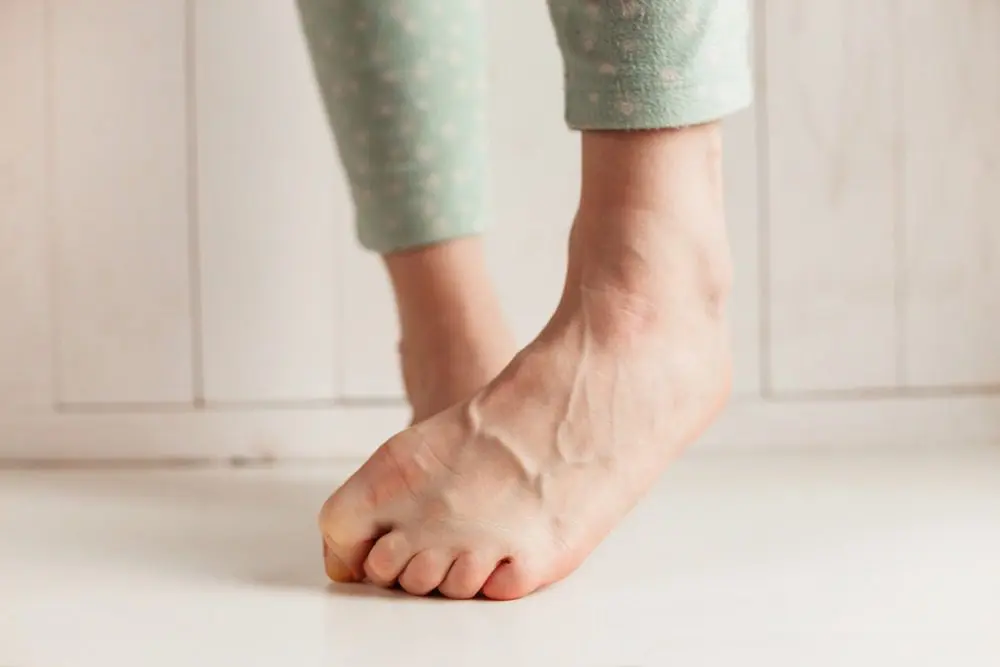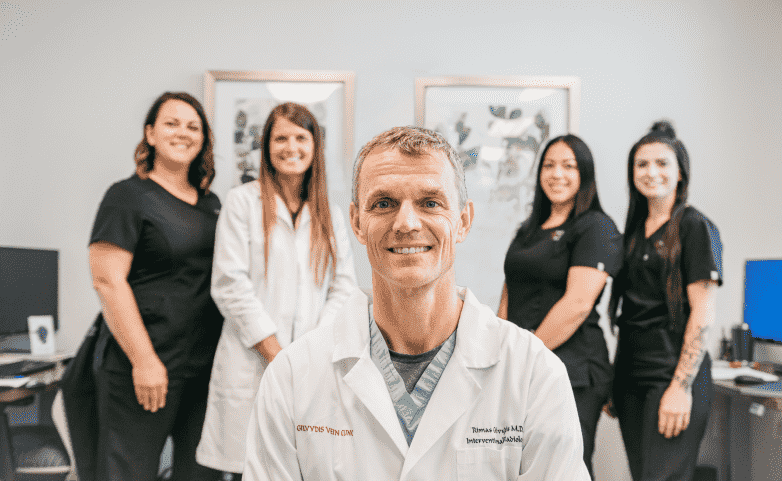
Blood Pooling in Feet – Common Causes of Venous Reflux
Blood Pooling in Feet – Common Causes of Venous Reflux Your veins are supposed to pump blood back to your heart. But when you have
There are a variety of causes for veiny feet. Some of them happen naturally, while others can be attributed to underlying conditions. For example, aging can cause your skin to become thinner and more elastic. This makes it easier to see your veins. It can also be caused by hormones and changes in blood pressure. Increased blood pressure in your veins stretches them out longer and wider. While there is normally a one-way valve that allows blood to return to your heart, when they’re stretched, the blood becomes backed up and bulges out the veins further. This makes them much more visible.

Veiny feet are a common concern, often resulting from natural aging or hormonal changes, but they can also signal underlying vein conditions like chronic venous insufficiency or varicose veins. Understanding the causes and available treatments can help you address both the cosmetic and health aspects of this issue.
Venous insufficiency occurs when your leg veins don’t allow blood to flow back up to your heart. This causes blood and other fluids to accumulate in your feet, which results in the veins in your feet swelling, bulging, and thickening. If left untreated, they can turn into varicose veins.
Spider veins occur when the small, one-way valves inside the veins weaken. When these valves are weak or damaged, blood flows backward and accumulates in your veins.
Like spider veins, varicose veins are a result of weakened vein valves and walls. The appearance of these veins become swollen and twisted, lying just under the skin.
A blood clot can cause sudden bulging in the veins on your feet. Because they obstruct the flow of blood in a vein, they eventually cause excess blood to pool in your feet, which stretches the veins out. If you suspect you have blood lot, visit the ER immediately.
Some bulging veins on our feet are harmless and can be treated strictly for aesthetic reasons. Others, however, can be caused by more serious conditions that need to immediately be addressed by a professional.
If you experience any of the following systems, it is a good idea to see a professional to determine if you are experiencing a more serious, underlying condition.

“The staff is wonderful. They are so easy to talk to and answered all my questions. They make you feel like your family. Dr. Gilvydis is very compassionate and funny. He and his staff work so well together.”
Jodi – Geneva, IL
“Dr. Gilvydis and his entire staff are amazing! Very professional and helpful along the way. Answered all my questions and made the process so easy. I would without a doubt, recommend Gilvydis Vein Clinic to anyone!”
Mary J. – Geneva, IL
“Truly positive experience. My family doctor highly recommended procedures through Gilvydis Clinic. Happy I did not have to wait weeks for an appointment.”
Christina – Naperville, IL
If you’re dealing with unsightly or uncomfortable veins in your feet, there are several effective treatment options available. These range from conservative measures like compression stockings and lifestyle adjustments to advanced medical procedures such as sclerotherapy and endovenous laser ablation.
There are a variety of things that you can do at home to not only ease the symptoms of your veiny feet but also prevent them in the future.
Sclerotherapy treats veins that are enlarged or twisted, as well as spider veins. It involves using a needle to put a solution into the vein that causes the vein to constrict and close. This forces the blood through healthier veins, which leaves the unused, collapsed veins to fade.
This process tends to take a few weeks for the veins to fade, though they may not disappear entirely. Full results can take months and multiple sclerotherapy treatments.
Laser vein ablation is a minimally invasive treatment in which a catheter and laser fiber are inserted into the larger varicose veins (enlarged and twisted veins). The area is quickly numbed with local anesthesia.
These leaky malfunctioning veins are then closed off with heat energy from the laser. The laser and catheter are removed and the treated vein is sealed and will eventually be reabsorbed by the body.
Veiny feet can result from various factors, including natural aging, hormonal changes (such as during pregnancy), and increased blood pressure in the veins. These conditions can cause veins to become more visible and pronounced.
It’s advisable to seek medical attention if you experience symptoms like persistent pain, swelling, or if the veins become discolored or warm to the touch. These could indicate underlying conditions that require professional evaluation.
Treatment options vary depending on the severity and underlying cause. They may include lifestyle changes, compression therapy, sclerotherapy, or endovenous laser ablation. A healthcare provider can recommend the most appropriate treatment based on individual circumstances.

Blood Pooling in Feet – Common Causes of Venous Reflux Your veins are supposed to pump blood back to your heart. But when you have

How to Recognize and Treat Vein Disease: Corona Phlebectatica Corona phlebectatica is much more common than most think. According to Johns Hopkins Medicine, venous disease affects

Blood Clots:What Are They and How To Prevent Them Blood clots are a serious condition that can be fatal if not treated. According to the
Whether you’re seeking relief from discomfort or looking to restore your confidence, Gilvydis Vein Clinic offers safe, fast, and effective varicose vein surgery solutions. Our expert team is here to guide you every step of the way—from diagnosis through recovery.

We’re proud to be one of three vein centers in Illinois with an IAC accreditation. Get back on your feet with a team of vein specialists who help you understand your vein treatment options.